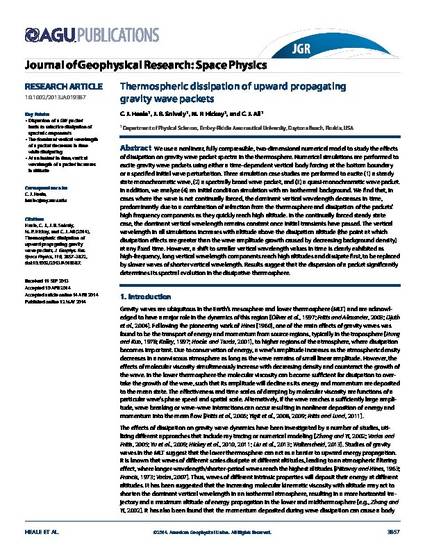
We use a nonlinear, fully compressible, two-dimensional numerical model to study the effects of dissipation on gravity wave packet spectra in the thermosphere. Numerical simulations are performed to excite gravity wave packets using either a time-dependent vertical body forcing at the bottom boundary or a specified initial wave perturbation. Three simulation case studies are performed to excite (1) a steady state monochromatic wave, (2) a spectrally broad wave packet, and (3) a quasi-monochromatic wave packet. In addition, we analyze (4) an initial condition simulation with an isothermal background. We find that, in cases where the wave is not continually forced, the dominant vertical wavelength decreases in time, predominantly due to a combination of refraction from the thermosphere and dissipation of the packets’ high frequency components as they quickly reach high altitude. In the continually forced steady state case, the dominant vertical wavelength remains constant once initial transients have passed. The vertical wavelength in all simulations increases with altitude above the dissipation altitude (the point at which dissipation effects are greater than the wave amplitude growth caused by decreasing background density) at any fixed time. However, a shift to smaller vertical wavelength values in time is clearly exhibited as high-frequency, long vertical wavelength components reach high altitudes and dissipate first, to be replaced by slower waves of shorter vertical wavelength. Results suggest that the dispersion of a packet significantly determines its spectral evolution in the dissipative thermosphere.
Available at: http://works.bepress.com/michael_hickey/15/
